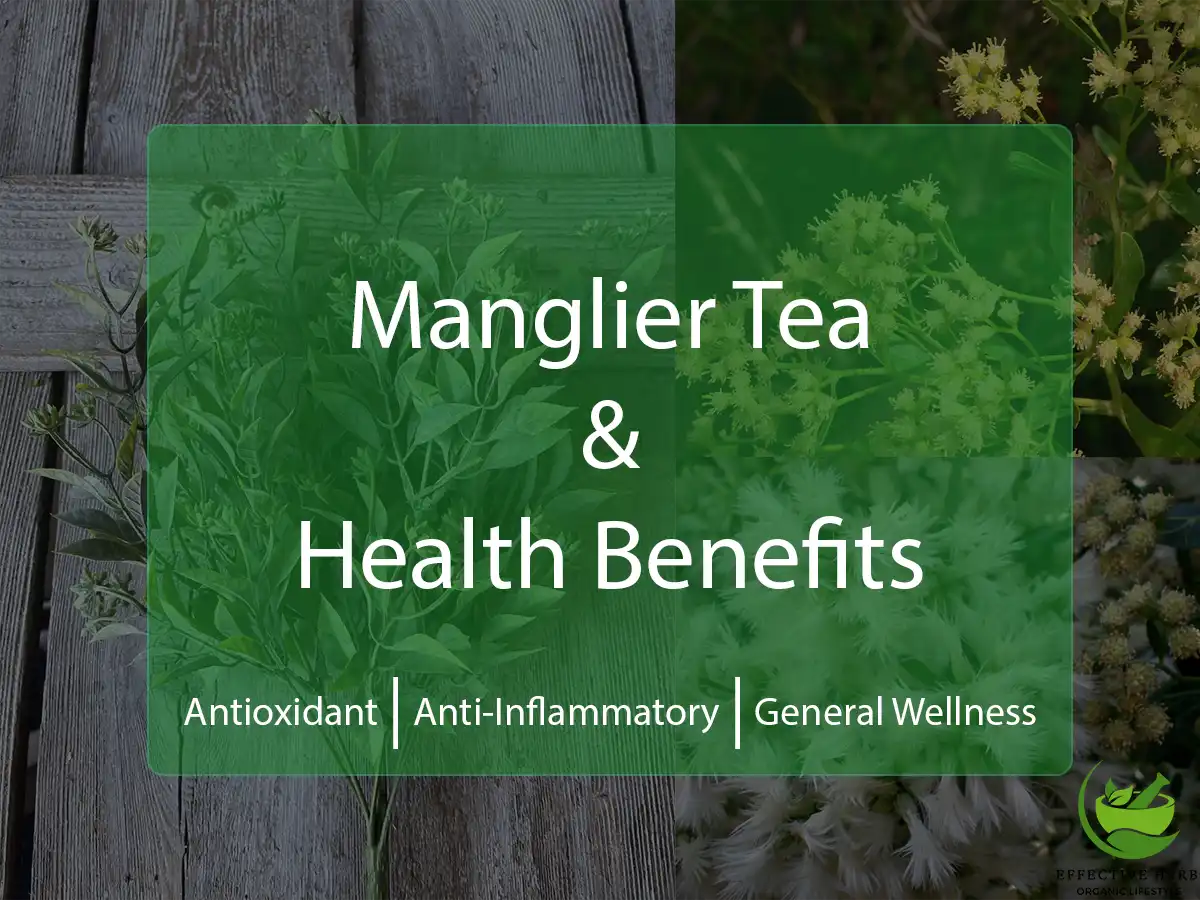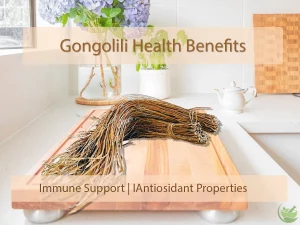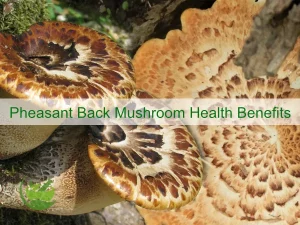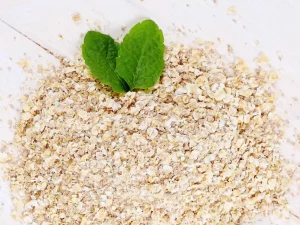Manglier Tea Health Benefits
The Manglier, scientifically known as Baccharis Halimifolia, and also as Groundsel Bush, is a shrub found in coastal areas. This plant is known for its health benefits when used in tea. It contains compounds like Tannins and Flavonoids, which may have antioxidant and anti-inflammatory properties, potentially aiding digestion and boosting the immune system. The research has explored Manglier tea health benefits by managing the conditions like colds, inflammation, and digestive issues. While more studies are needed, Manglier tea is gaining attention for its promising health benefits, making it a topic of interest in herbal medicine.
Before delving into the health benefits of Manglier tea, it’s essential to explore the taxonomy and morphological features of the Manglier plant. To begin, it’s worth noting that “Manglier” may actually refer to ‘Mangrove,’ a group of salt-tolerant trees or shrubs.
Common & Region Names (Baccharis Halimifolia)
Baccharis halimifolia is a plant commonly known as “Groundsel Bush” in English. Here are common and region-specific names to ensure a clear understanding of the plant:

Taxonomy of Manglier Plant
Baccharis halimifolia belongs to the genus Baccharis within the Asteraceae family. This family is known for its diverse range of flowering plants commonly referred to as the aster, daisy, or sunflower family. Within this genus, it is a distinct species characterized by its deciduous shrub form and specific ecological preferences.
| Kingdom | Plantae |
| Phylum | Angiosperms |
| Class | Eudicots |
| Order | Asterales |
| Family | Asteraceae |
| Genus | Baccharis |
| Species | Baccharis Halimifolia |
Morphological Features
Manglier (Eastern Baccharis or Groundsel Bush) is a perennial shrub native to the southeastern United States.

Here are some key botanical features that help recognize the Manglier plant and its leaves, essential for preparing Manglier tea to experience its health benefits.
Baccharis Halimifolia (Manglier) is a woody shrub that can reach heights of 3 to 10 feet (0.9 to 3 meters). It typically has a dense, rounded or vase-shaped form.
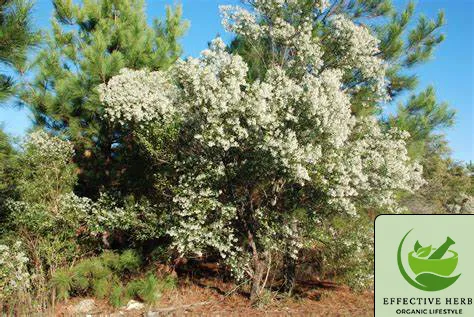
The leaves are alternate, long, slim and often serrated, with a lanceolate or elliptical shape. They are typically 2-5 inches (5-12 cm) long and are usually brighter dark green looking like feathery ferns.
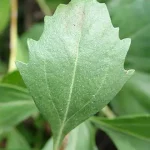
The leaves can handle tough places, like spots with a lot of salt in the soil. They do this by getting rid of extra salt, which helps the plant survive in places where other plants might have a hard time. To get Manglier tea health benefits the leaves are used to prepare the tea.
These leaves are also like a home and food for bugs and animals, which is important for the environment where Baccharis Halimifolia grows.
The branches of Manglier (Baccharis Halimifolia) are more like long, skinny sticks covered in small leaves.
What’s fascinating about these branches is that they can grow in really tough places where there isn’t much water, like deserts. Also, they make a cosy home for birds and bugs. So, even though they don’t look fancy, these help the plant survive in harsh spots and give a place for animals to live.
The shrub produces small, inconspicuous, greenish-yellow flowers that are borne in dense clusters at the tips of branches. These flowers are uni-sexual, with male and female flowers on separate plants (Dioecious).
These flowers may not be visually striking, but they play a crucial role in supporting pollinators like bees and butterflies. These insects visit the flowers to collect nectar and pollen, unintentionally aiding in pollination.
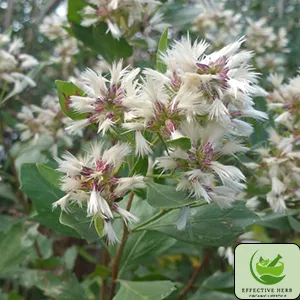
After flowering, Baccharis halimifolia(Manglier) produces small, dry, achene-type fruits that are surrounded by white, fluffy, pappus-like hairs. These fluffy structures aid in wind dispersal.
Baccharis Halimifolia (Manglier) produces tiny seeds that are enclosed within the dry, feathery fruits. These seeds are adapted for wind dispersal, and they can be carried by the breeze to new locations where they can germinate and grow into new plants. The ability to disperse seeds in this way contributes to the plant’s ability to colonize different habitats.
This species is commonly found in coastal regions, marshes, wetlands, and along riverbanks. It is well adapted to both saltwater and freshwater environments.
Manglier Tea Health Benefits
Manglier Tea, also recognized as Groundsel Bush tea or Baccharis Halimifolia tea, has a history of traditional use in various cultures due to its potential health benefits. However, these claims are often based on anecdotal evidence and traditional knowledge. Some of the Manglier tea health benefits include:
Digestive Aid
In old times, people consumed Manglier Tea to help alleviate digestive issues such as indigestion, bloating, and stomach discomfort. It is commonly understood to possess gentle soothing attributes for the digestive system.
Respiratory Support
Baccharis Halimifolia (Manglier) belongs to the Asteraceae family, which includes other plants known for their potential respiratory benefits. Traditional use suggests that Manglier Tea may help with respiratory conditions, such as coughs and congestion.
Anti-Inflammatory:
Manglier Tea has been used traditionally for its anti-inflammatory properties, which may help ease various types of inflammation-related discomfort.
Antioxidant
Antioxidants are commonly recognized for their potential to safeguard cells from oxidative stress and promote overall well-being.
Relaxation and Stress Reduction
Some people consume Manglier Tea as part of relaxation rituals. It is considered that it provides a soothing effect and reduces stress.
Inflamed Kidneys
Groundsel Bush(Manglier) has been used in the past for its diuretic properties. Some people believed that it could help flush toxins from the body and, in turn, alleviate kidney inflammation.
Fever Relief
People often use, on their own as a practice, Groundsel Bush to reduce fever. The plant was believed to have potential Antipyretic (fever-reducing) properties.
Wound Treatment
From time in the past, Groundsel Bush (Manglier) might have been used topically on wounds due to its astringent properties. Astringents can help tighten and dry out the skin, potentially aiding in wound healing.
Ulcer Treatment
It has traditionally been used to relieve ulcers, possibly due to its potential anti-inflammatory properties.
Gastrointestinal Illness
Groundsel bush(Manglier) has been used for the past time to address gastrointestinal issues. Some believed it could alleviate symptoms like diarrhea or stomach discomfort.
Bacterial/Fungal Infections
It has been believed from the very past that Groundsel Bush(Manglier) might contain compounds with antimicrobial properties.
General Wellness
As traditional herbal medicine, Manglier Tea is sometimes consumed to get health benefits and as a general wellness tonic, believed to promote overall health and well-being.
It’s to note that these traditional understandings about Manglier Tea health benefits are based on cultural practices and historical usage rather than scientific evidence.
If you are interested in using Manglier Tea for its potential health benefits, it’s advisable to consult with a healthcare professional or a traditional medicine practitioner who is knowledgeable about the plant and its traditional use.
Chemical composition of Manglier (Groundsel Bush)
The Manglier or Groundsel Bush, is a native North American plant with various chemical components which are listed here:
The Manglier is rich in sesquiterpene lactones, including baccharin and diacetylbaccharin. These compounds are known for their potential anti-inflammatory and anti-tumor properties.
This plant contains various flavonoids like quercetin, kaempferol, and isorhamnetin. Flavonoids are antioxidants that may have anti-cancer and anti-inflammatory effects.
Baccharis halimifolia(Manglier) contains tannins, which have astringent properties and may be beneficial in traditional medicine for treating skin conditions and diarrhea.
Some alkaloids are present in this plant, and they may have pharmacological significance, though their exact roles are still being studied.
Terpenoids, including essential oils, can be found in Baccharis halimifolia. These compounds often contribute to the plant’s aroma and may have medicinal properties.
Various phenolic compounds are present in Baccharis Halimifolia, and these compounds are known for their antioxidant properties and potential health benefits.
The plant also contains hydrocarbons, which are organic compounds with diverse roles, including protection against herbivores and pathogens.
These are the components found so far. Ongoing research may reveal additional compounds and their specific uses or effects. Additionally, the potential medicinal or practical applications of these compounds are areas of interest for further study and exploration.
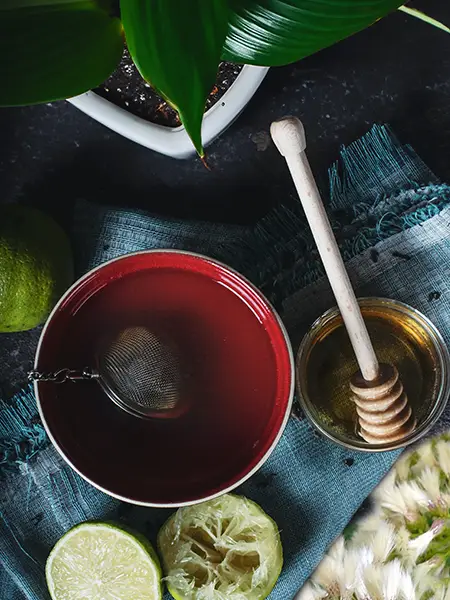
How to Prepare Manglier Tea
Preparing tea from Baccharis Halimifolia (also known as Manglier) involves several steps. Here’s a breakdown under different headings to follow them easily for having Manglier tea health benefits fully in the right way.
Ingredients
- Manglier leaves: Collect fresh, healthy leaves from the Manglier plant. Ensure they are clean and free from any contaminants.
- Water: Use clean, filtered water for brewing.
- Optional flavorings: Honey, lemon, or other preferred additives.
Preparation of Leaves
- Harvesting: Gather young, tender leaves from the Manglier plant. Avoid older or damaged leaves for the best flavor.
- Cleaning: Rinse the leaves thoroughly under running water to remove any dirt or debris.
- Drying: Air-dry the leaves in a well-ventilated area away from direct sunlight until they are completely dry. This can take a few days, depending on humidity levels.
Brewing Process
- Boiling Water: Heat water in a pot or kettle. Use about 1-2 teaspoons of dried Manglier leaves per cup of water.
- Steeping: Place the dried leaves in a teapot or directly into the boiled water. Let it steep for about 5-10 minutes, allowing the flavor to infuse into the water. Adjust steeping time for desired strength.
- Straining: Once steeped, strain the tea to remove the leaves. Use a fine-mesh sieve or a tea strainer.
Serving: Pour the brewed Manglier tea into cups. Add honey, lemon, or other flavorings if desired.
Additional Tips
Safety Precautions
Recommended Manglier Tea Intake
In traditional medicine, people have used Baccharis Halimifolia, particularly for making tea.
However, its consumption can have potential risks due to compounds it contains, such as tremetol, which can be toxic in high doses.
There aren’t standardized intake quantities for Baccharis Halimifolia as it’s not widely recommended for consumption due to its potential toxicity. It’s advisable to avoid consuming it in large amounts or regularly.
Precautionary Measures
Precautionary measures when using Manglier (Baccharis Halimifolia) tea include:
- Consultation: Consult with a healthcare professional before consuming it, especially if you have any health conditions or are on medication.
- Limited Consumption: If still considering using it, limit the intake to small quantities and infrequent usage.
- Avoid Prolonged Use: Do not consume it for an extended period. Short-term and occasional use, if any, is recommended.
- Watch for Symptoms: Be vigilant for any adverse reactions or symptoms like nausea, vomiting, dizziness, or other discomfort after consumption. If experienced, seek medical help immediately.
- Pregnancy and Lactation: Pregnant or breastfeeding women should avoid it due to potential risks to the fetus or newborn.
- Quality and Source: Ensure that the plant material used for making the tea is sourced from a reputable supplier and is free from pesticides or other contaminants.
Always remember, one should exercise caution, especially with less well-known plants like Baccharis Halimifolia, as the safety of herbal teas or remedies varies. It’s usually best to opt for safer and more researched herbal alternatives for health purposes.
Research Work on a Bio-active Compound Extracted from Baccharis Halimifolia (Manglier)
Topic: “Groundsel Bush (Baccharis halimifolia) Extract Promotes Adipocyte Differentiation In Vitro and Increases Adiponectin Expression in Mature Adipocytes.“
Anik Boudreau conducted a research study on an extract taken from the Baccharis halimifolia plant, also known as groundsel bush (GB) or Manglier, and observed its effects on various cells in the body. Anik Boudreau also found that this extract had positive impacts.
- Adipocyte Development: In cells that turn into fat cells (3T3-L1 adipocytes), the extract boosted the accumulation of fats and increased the expression of several adipogenic genes related to fat cell formation.
- Mature Fat Cells: In fully developed fat cells, the extract reduced the expression of a pro-inflammatory factor called resistin and increased the levels of adiponectin, a protein linked to better metabolic health. It also helped counteract the decrease in adiponectin caused by an inflammation-triggering molecule
- Macrophages: In immune cells (macrophages), the extract lessened the expression of genes associated with inflammation that were induced by a bacterial component (LPS).
These findings suggest that the groundsel bush extract might have potential use as a dietary supplement or nutraceutical to support metabolic health and resiliency by promoting positive changes in fat cell development, mature fat cells, and immune cells.
Bottom Lines
Health benefits, from the Baccharis Halimifolia plant, are based on traditional use. It’s linked anecdotally to aiding digestion, respiratory health, inflammation, and acting as an antioxidant. So consulting healthcare professionals before using Manglier tea for health purposes is advisable.
The plant’s chemical composition includes compounds like sesquiterpene lactones, flavonoids, tannins, alkaloids, and phenolic compounds, showing potential medicinal properties. However, further research is needed to understand their effects.

